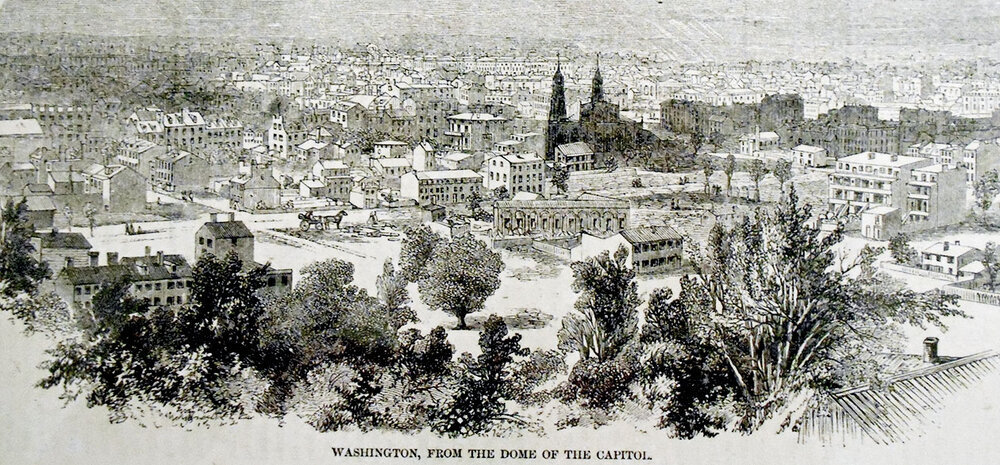
AN EXAMPLE FOR ALL THE LAND,
1862 – 1878
With the Civil War, progressive Republicans take over Congress and push through legislation-—emancipation for D.C. slaves in April 1862, public schools for black children, and black suffrage—laying the ground for a biracial democracy in the capital. The District swells with African Americans as slaves follow the Army into the city and the nation’s foremost black leaders-—Frederick Douglass and family, John Francis Cook, and John Mercer Langston—make D.C. their home. Ulysses Grant and the Republican Party see the legislation on behalf of African Americans and the reconstruction of capital as “an example for all the land,” an experiment in what they could achieve if they were to win the Civil War.
Escaping Slaves follow the Union Army into places of refuge.
Boss Alexander Shepherd, head of the D.C. Department of Public Works, oversees reconstruction in the District; but lacking an engineer’s training, he mismanages the effort and overspends his budget. Prominent white citizens, led by banker George Riggs, are horrified by the chaos and utterly opposed to blacks voting. They first persuade Congress to create the District as a territory; then, they urge Congress to eliminate local government altogether. With the Organic Act of 1878, Congress arranges for Washington, D.C. to be run by three commissioners appointed by the U.S. President, leaving D.C. residents with no self-government whatsoever.
The arrangement lasts for a century.
Washington D.C. street.

